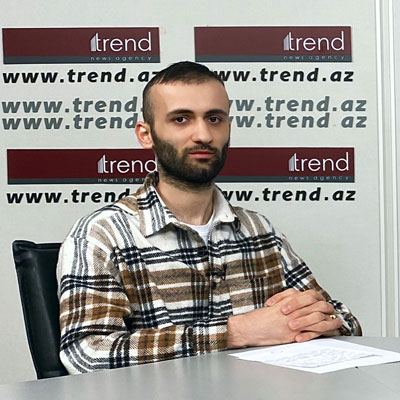BAKU, Azerbaijan, May 21. 4G is the dominant technology in Azerbaijan (59 percent), 3G still accounts for about 31 percent of total connections against a global average of 17 percent, director for strategic cooperation in Russia and the CIS of the GSM Association Tair Ismailov told Trend.
According to him, digital transformation is a key part of the national goal of Azerbaijan's socio-economic development by 2030.
"In December 2022, the working group on the development of a digital economy strategy began work on the development of a unified national strategy that determines the direction of the development of the digital economy in Azerbaijan," he noted.
Ismailov stressed that bridging the digital divide in the region will require significant joint action.
"Currently, the countries of Central Asia and the South Caucasus are experiencing a digital revolution, 4G is still the dominant technology, but 5G activity is starting to gain momentum. Azercell and Bakcell launched 5G pilot projects in early 2023 in Azerbaijan, while the country's regulator plans to set up a working group to develop a common 5G strategy. But the digital future needs investment," Tair Ismailov said.
Also, according to him, governments and relevant authorities should implement measures that can attract investment in the deployment of network infrastructure in underserved areas from this point of view, create innovative digital services to stimulate demand, and remove various non-infrastructural barriers to the introduction of mobile Internet.
"Mobile communication is the dominant form of Internet access. Mobile technologies have played a fundamental role in expanding affordable communications throughout Central Asia and the South Caucasus. This is based on the ability of wireless networks to cover a wide area with greater efficiency than many other technologies, especially in developing regions with underdeveloped fixed network infrastructure and relatively low levels of urbanization," he said.
Ismailov noted that in the region, on average, more than 40 percent of the population lives in rural areas and often in mountainous areas, where mobile communication is usually the first and often the only form of access to the Internet due to limited fixed broadband infrastructure and costs associated with their deployment in rural areas.
"We know that there is an incredible opportunity for revenue growth as the economy becomes more digital, but this will only happen after the next cycle of 4G network expansion and 5G rollout in the region. Therefore, we must consider regulations and tax breaks to ensure that we are creating a favorable environment for infrastructure investment now to create all the opportunities for expanding digitalization," he added.
As of 2022, the regional gap in the use of mobile internet services was largest in Georgia (52 percent) and Turkmenistan (50 percent), while in Azerbaijan the figure was 31 percent.






